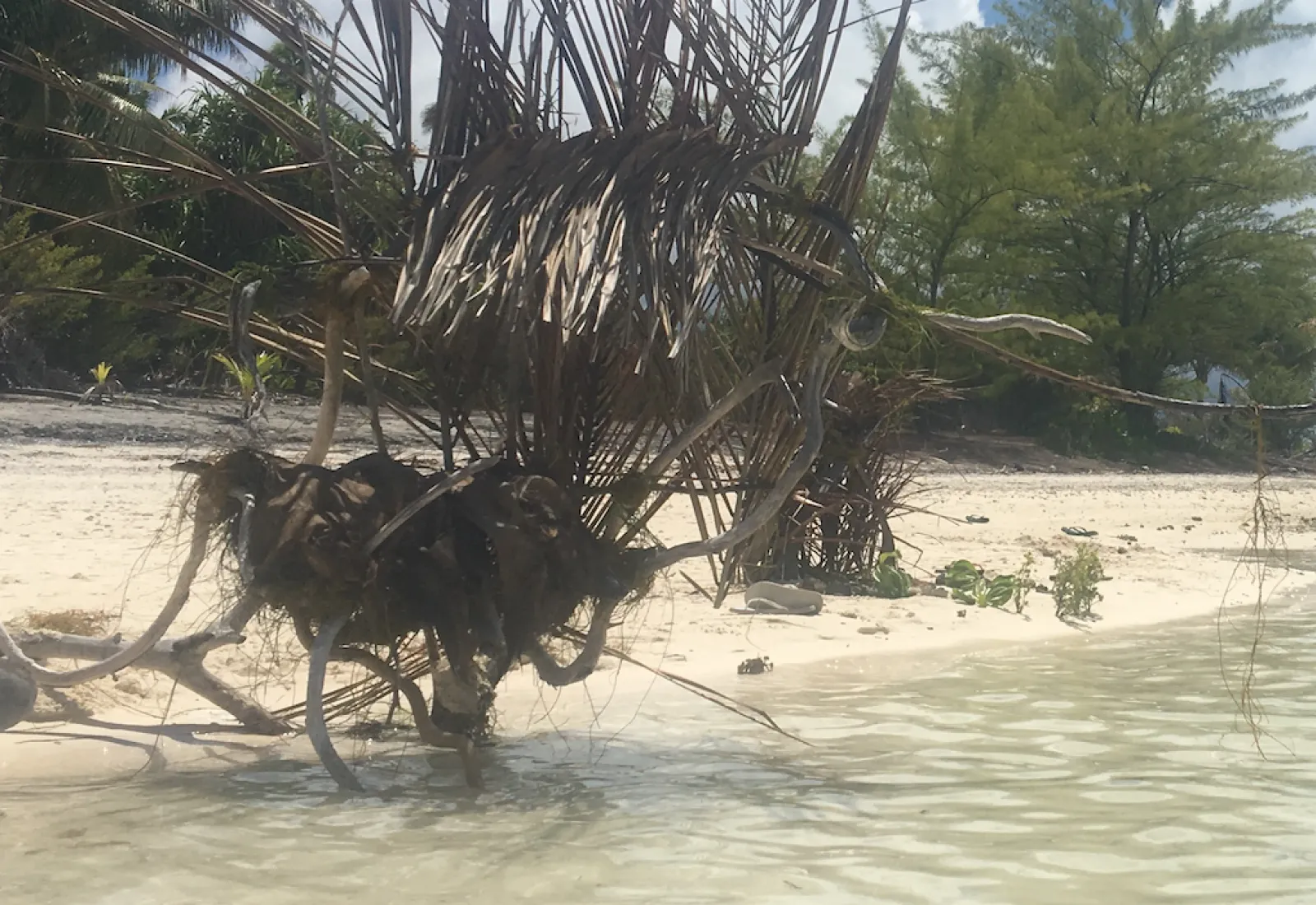
The objective of the activity is to understand the effects of human activity and natural forces on islands, and to see possible solutions to the problems caused by humans.
Students will be able to cite examples of changes in islands due to natural forces as well as changes due to human activity; and to explain whether the change is a fast process or a slow process. Students will design and build a beach construction, analyze the effects of the environmental forces on their constructions. Students will measure and interpret the effects of their construction on a beach ecosystem.
Changing beaches
Materials: bamboo brochette skewers, a plywood 'wave board', and a variety of 'found' natural materials.
On a smooth section of beach, have students place a row of bamboo brochette skewers (optional) to mark the approximate form of the beach. Then, in pairs or in small groups, students 'construct' things, for instance, a headland of coral rubble, a 'building' made from a large stone, fencing made of coconut leaves and sticks, a seawall made of large stones tied together with vines, a jetty made of a coconut tree trunk, etc. The goal is to build something sturdy. Once the constructions are finished, they can be measured, and drawn/photographed. Take photos from above to show the line of the beach, skewers, and construction.
Ask students to explain the what, how and why of their constructions, and make a hypothesis about what they think will happen if there is a storm, or is the sea level rises, or...
If possible, leave the constructions for a few hours, to see what happens naturally. Any changes can be noted.
One group at a time, the students should present their construction, then, using the wave board, 'make waves' by pushing the board down into the water. Students must experiment with the best distance for making waves which will change the beach more quickly. Encourage students to try all sorts of wave-making techniques and note how size and frequency of the waves affects the changes to the beach. If possible, drive the boat along the shore to make a bigger wave. After some final measurements, and drawings or photos, the 'found' items should be put back where they came from. More waves on the cleaned beach can be used to demonstrate how nature will reclaim the balance once the beach is cleaned up.
Geological and Meteorological Events that Reshape an Island
After using a wave board on their beach constructions, students should be able to imagine other natural processes which can change islands, and to think about the different effects those processes would have on atolls vs. high islands.
Ask students to brainstorm ways in which an island may change after it is formed. Define slow and fast processes, meteorological and geological changes. The table below can be completed as an individual activity, or projected on the board and used as an organizational scheme for a class discussion. If work is done individually, the explanations section should be shared in class.
Questions:
How are tropical atolls protected from meteorological changes?
To of the processes (events) are atolls most vulnerable?
Discuss construction materials and consequences - How does the use of traditional, natural construction materials minimize pollution when buildings were destroyed?
| events | slow process | fast process | meteorological | geological | explanations of the dangers to atolls vs. dangers to high islands |
|---|---|---|---|---|---|
| earthquakes | |||||
| landslides | |||||
| cyclones | |||||
| wind | |||||
| waves | |||||
| floods | |||||
| volcanic activity | |||||
| formation/destruction of coral reefs | |||||
| climate change | |||||
| Geological and meteorological events that reshape an Island | |||||
Honuea
Onetahi

